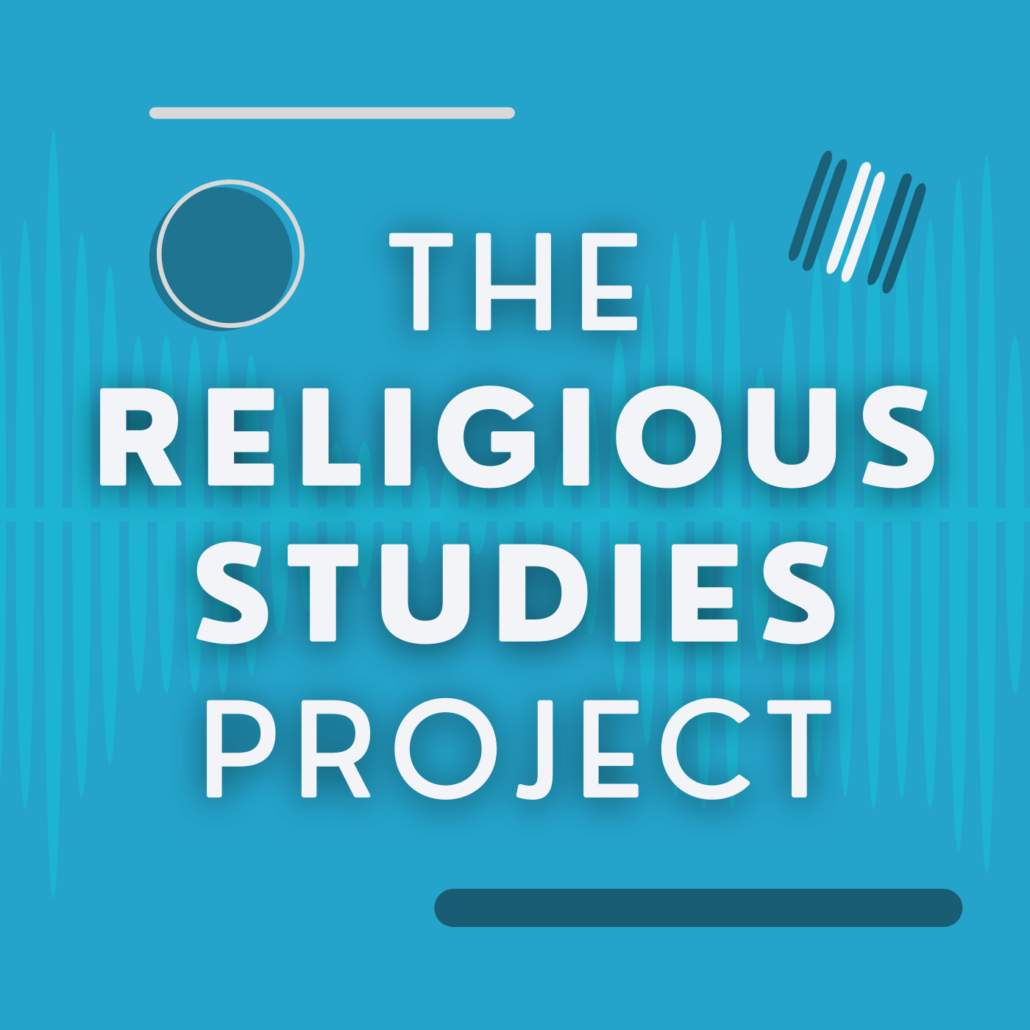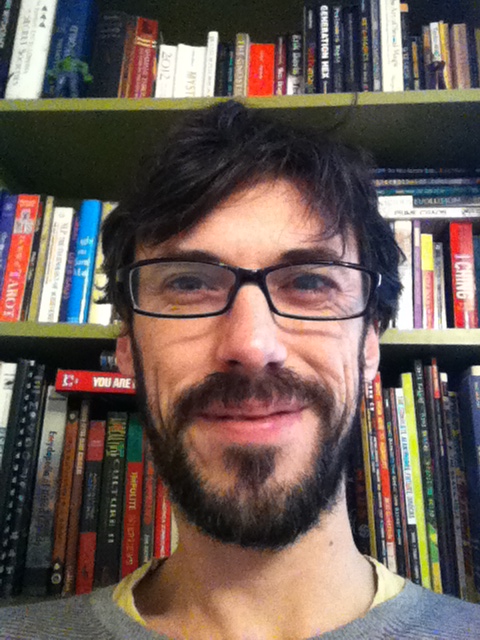Published by the Religious Studies Project on 24 October 2013, in response to A. David Lewis’s Interview on Religion in Comic Books (21 October 2013).
“What does a study of religion and comics look like?” A. David Lewis is asked at the beginning of this podcast. His answers, along with the wealth of essays in his co-edited volume, Graven Images: Religion in Comic Books & Graphic Novels, suggest that, happily, its boundaries have yet to be defined. In his broad-ranging conversation with Per Smith, Lewis highlights the many connections between religion and comic books; connections which arguably stretch back through woodcuttings and illuminated manuscripts to Egyptian hieroglyphics. This sometimes tempestuous relationship has given rise to some peculiar ironies. For instance, as Lewis points out, Chick Tracts have become the best-selling independent comics of all time, but are barely known outwith of the evangelical communities that utilise them. Another strange connection: Max Gaines founded Educational Comics by publishing Picture Stories from the Bible. When his son William took over the company following Gaine’s death, Educational Comics became Entertaining Comics, soon becoming infamous for its gore-ridden horror comics such as Tales From the Crypt and Vault of Horror, a startling about-face from Picture Stories from the Bible! But the strange relations between comics and religion go beyond just these odd, amusing facts.
For instance, in Alvin Schwartz’s metaphysical memoir An Unlikely Prophet, the former Superman and Batman writer describes his encounters with a seven-foot Buddhist monk who is in fact a tulpa, an individual who was thought into being by a Tibetan mystic. This monk proceeds to teach Schwartz that Superman is also a tulpa. Schwartz’s memoirs point to a fascinating history of what Kripal (2010) and Knowles (2007) have described as the “surprisingly intimate ties” superhero comics have to “the histories of occultism, psychical research, and related paranormal phenomena” (Kripal, 2010:6). Indeed, it is hardly surprising that Lewis is now turning his attention to the depiction of death in superhero comics. Lewis’s description of this sub-genre, and it’s six recurring features – journey to the after-life; encounter with family member; dream/hallucination; opponent; heroic reversal; and liberation – inevitably calls to mind Joseph Campbell’s monomyth, opening the way for a fruitful dialogue between the study of comics and religion to other disciplines such as the study of mythology and folklore.
Certainly we might suggest Lewis’s closing statements, in which he highlights the capacity of the secular medium of comic books to introduce the reader to the transcendent points beyond just organised religions towards shamanism and other pre-modern spiritualties. Wright (2007), for example, has suggested that, “the modern superhero is a contemporary manifestation of the ancient shamanic role” (2007:127). Pedler has argued that, “Morrison’s mission […is] to make our reality as interesting as theirs, as surreal, full of every potential and possibility” (Pedler, 2009:264), making them, in effect, shamanic fictions. In this regard it is interesting that Lewis only briefly mentions Alan Moore and Grant Morrison, as it is another of those strange coincidences that two of the most prominent creators in the field are self-confessed magical practitioners. Certainly their work and philosophies extend far beyond the realm of Paganism mentioned by Lewis to include the Thelemic teachings of Aleister Crowley and the postmodern practices of Chaos Magick.
Lewis correctly points out that superhero comics have used invented religions to interrogate real-world religions. However, the work of Moore and Morrison demonstrate that comic books have been surprisingly welcoming of more ‘fringe’ spiritualities, or at least an intimation of more esoteric religious teachings, as in Klock’s (2004) suggestion that contemporary X-Men comics reflect what he calls a “Gnostic, or pessimistic, Post-humanism”, or the wealth of ascended Tibetan masters that populate superhero universes, such as the Ancient One who taught Marvel’s Dr. Strange to become ‘master of the mystic arts!’ Moreover, superhero comics present to us worlds in which the transcendent and the material are intertwined. Unlike our world, the universes that superheroes inhabit see no mutual exclusivity between science and magic. As Bainbridge says, “the premodern, the sacred, the mythological are replaced with science and technology […] in images like the Cosmic Cube, ego the Living planet, the scientific mythology of Asgard and the towering figure of Galactus” (2009:74). It is arguably this blurring of categorical distinctions that has led many to note the affinities between superhero comics and modern spiritualities such as the ‘New Age’ Human Potential Movement, which itself combined Eastern spiritualities with the methodology of Western science.
As Lewis points out, Possamai has posited that superheroes comics may constitute a kind of hyper-religion, encouraging the reader to develop a manifest a vision of their ‘super-self’ (Possamai, 2006:60). Meanwhile, Kripal (2002) highlights the synchronicity of the foundation of the Esalen Institute coinciding with the introduction of the “evolutionary mythology” of Marvel’s X-Men in 1963. Indeed, Michael Murphy, co-founder of the Esalen Institute, the think tank-come-retreat set up to investigate human development and informed by a kind of “evolutionary mysticism”, cites Superman and other science-fictional texts as expressing, “intimations of capacities that are available to us” (Murphy, 1992:213), much as Jules Verne anticipated atomic power in 20,000 Leagues Under the Sea, or H.G. Wells’ placement of The First Men on the Moon. Murphy wonders if such images, “might prefigure luminous knowings and powers […] that can be realized by the human race”.
As both Lewis’s book and interview demonstrate, the study of comic books and religion remains a rich and fertile field, from which our understanding of both comics and religion can only benefit. Certainly there is a thirst for such knowledge. The bewilderingly detailed website, comicbookreligion.com – where we discover that the Fantastic Four’s the Thing is Jewish, the Incredible Hulk is a lapsed catholic, while the X-Men’s Wolverine was “raised Protestant; sometimes atheist; has practiced Buddhism; sceptical seeker”- suggests that this interest is true of even non-academic audiences. The impetus for such studies can only be bolstered by the self-confessed interest in religion and transcendent experiences expressed by writers as varied as superhero comic luminaries Steve Engelhart, Chris Claremont and Barry Windsor-Smith, as well as the aforementioned Moore and Morrison and independent creators such as Craig Thompson (whose Blankets is an autobiographical account of his Evangelical Christian upbringing) and, surely, the unique and apocalyptic creations of Jack Chick.
This multiplicity of approaches and texts is to be celebrated. While still a young discipline the study of comics is now gaining momentum. As such there has been a tendency to study comics in the light of religion (and, more commonly, mythology), as a way of legitimating their object of study. As if to say, “look at this illegitimate art-form, it’s like something respectable that you are familiar with!” However, as the interview with Lewis, and, one hopes, this reply, demonstrate, if we take comics on their own terms, rather than as a shadow of some original source, they can also allow us to cast the shadow of comics onto those original sources, allowing us to discern or reclaim even the most illegitimate of religious experiences.
This material is disseminated under a Creative Commons Attribution-NonCommercial-NoDerivs 3.0 Unported License. and can be distributed and utilised freely, provided full citation is given.
References
- Bainbridge, J. (2009) “‘Worlds Within Worlds’: The Role of the Superheroes in the Marvel and DC Universes” in Angela Ndalianis (Ed.) The Contemporary Comic Book Superhero New York pp. 64-85
- Klock, G (2004) “X-Men, Emerson and Gnosticism” Reconstruction 4:3 available online: http://reconstruction.eserver.org/043/Klock/Klock.html
- Kripal, J. (2010) Authors of the Impossible: The Paranormal and the Sacred University ofChicago Press
- Murphy, M. (1992) The Future of the Body: explorations Into the Further Evolution of Human Nature Los Angeles: Tarcher
- Pedler, M. (2009) “Morrison’s Muscle Mystery Versus Everyday Reality…and Other Parallel Worlds!” in Ndalianis, A. The Contemporary Comic Book Superhero Oxon: Routledge pp.250-269
- Possamai, A. (2006) “Superheroes and the development of latent abilities: A hyper-real enchantment?” in Hume, L. and Kathleen Mcphillips (eds) (2006) Popular Spiritualities: The Politics of Contemporary Enchantment Ashgate Publishing pp. 53-62
- Schwartz, A. (1997) An Unlikely Prophet Vermont: Destiny Books



